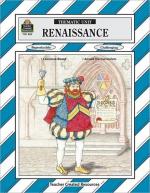|
This section contains 5,345 words (approx. 18 pages at 300 words per page) |

|
Trends.
At the dawn of the sixteenth century, humanism gradually gained popularity among educated townspeople and court circles in Northern Europe. At court, the fashion for Antiquity left its mark on spectacles and in the dramatic interludes that were regularly performed at banquets and other entertainments, as they had already done several generations earlier in Italy. At the same time religious mystery plays continued, but the impact of the Protestant Reformation discouraged their staging. In Germany the falloff in production of the mystery cycles that Protestantism caused encouraged development of other dramatic forms, including village farces and polemical plays designed to popularize either Protestant or Catholic sympathies. The traditional Fastnachtspiele, or Shrove Tuesday plays staged before the onset of Lent, continued under both Lutheran and Catholic auspices and became a new vehicle for moralistic teaching. A new feature...
|
This section contains 5,345 words (approx. 18 pages at 300 words per page) |

|




